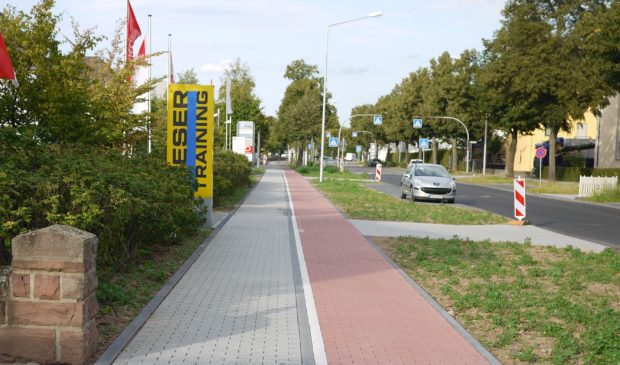Council floats competing active transportation bond options
Thursday, August 13, 2020 by
Ryan Thornton Between the transportation portion of the 2018 bond and the $720 million 2016 mobility bond, the city has over $200 million allocated for planned safe mobility projects like protected bike lanes, sidewalks and urban trails. Almost all of that money, however, will be spent by the end of 2024, leaving the city with numerous gaps in its active mobility network, an incomplete Vision Zero road safety program and many millions short on funding for large multimodal infrastructure projects.
To keep money flowing into active transportation beyond 2024, local mobility advocates have called for a $750 million safe mobility bond referendum in November. The city has responded with a $250 million option to continue that work at a steadier pace, and City Council members have proposed a compromise for either a $450 million or $300 million package to make significant progress on transportation, safety and climate goals without overwhelming city departments.
“With our significant corridor improvements beginning next year, and the implementation of Project Connect, we have a chance to live up to our aspiration of becoming the most progressive city in the United States when it comes to non-automobile infrastructure,” Council Member Paige Ellis said in an online post detailing the $450 million option.
On Wednesday evening, Council Member Ann Kitchen posted yet another alternative investment option of $300 million to Council’s message board. Given the economic uncertainty around Covid-19, Kitchen said the number “much better aligns with the current economic environment of our city.”
Council will consider a dollar amount for an active transportation bond as part of its budget hearing and tax rate adoption process continuing through the end of the week.
Ellis, who brought the $450 million proposal to Council, said the financial sweet spot “strikes the right balance between overall size and transformational progress” toward goals like investing in multimodal infrastructure in the eastern crescent and attaining a 50 percent non-car mode share by 2039, as stated in the Austin Strategic Mobility Plan.
Kitchen, however, said there is no need for such a large investment at the moment, especially considering that the amount would “eclipse” the city’s most ambitious housing investments.
A $450 million voter-approved investment would include a combined $120 million for urban trails and bikeways, pushing the city closer to the Bicycle Master Plan’s goal of completing 80 percent of the All Ages and Abilities network by 2025 – a collection of relatively safe and convenient existing and future bicycle paths. It would also include $80 million for sidewalks – roughly double the city’s proposal – and a total of $65 million for Vision Zero and safety improvements.
The $300 million option would include $91 million for urban trails and bikeways and keep even with the city’s $42 million proposal for new sidewalks.
The All Ages and Abilities bikeway network currently has a $200 million funding gap. The Sidewalk Plan’s high- and very-high-priority network is missing 390 miles of sidewalks, a cost of around $250 million.
While the $250 million bond would allow the city to move forward with a new pedestrian and bicycle bridge near Longhorn Dam, a trail connecting the southern and northern segments of the Walnut Creek trail system and $30 million to begin the work of the Urban Design Initiative on Congress Avenue downtown, Ellis’ plan would also include funding for the Barton Springs Road Bridge and multimodal improvements to the South Pleasant Valley corridor.
Kitchen’s plan, on the other hand, would address only “high-priority” capital projects, greatly reducing the amount given to the Barton Springs Road Bridge from Ellis’ plan.
“The Barton Springs Road Bridge has been a highly controversial project that was previously put on hold due to concerns from the community,” Kitchen said. “To name this project in the bond package without the opportunity for discussion, will catch the Barton Springs community and Zilker Neighborhood off-guard. Frankly it feels very … unfair, for these communities, considering we’ve had no recent updates or reports on its progress and the late hour of posting it for inclusion in the proposed bond package.”
Austin Outside, the coalition that led the push for a $750 million safe mobility bond, has decided to support Ellis’ proposal for a November bond referendum. In a statement released Tuesday evening, Beth Carroll, manager of the coalition, said the $750 million investment is still necessary to complete the high- and highest-priority active transportation elements of the Austin Strategic Mobility Plan. “But,” Carroll said, “we support a $450 million bond proposition this year because, per the Aug. 6 staff memo, it would set up the consideration of a future bond election in either 2024 or 2026.”
In light of plans for a tax rate election in November to help fund a $7.1 billion investment in public transit, Ellis said building out the city’s network of sidewalks, bikeways and trails could “double or even triple” the number of residents living a half-mile walk or two-mile bicycle ride from a high-capacity transit stop under the Project Connect system plan.
“(Project Connect) is a good plan,” Heyden Black Walker of Walk Austin said during Council’s public hearing on Wednesday. “The majority of transit users walk to their bus or train, yet if you draw a quarter-mile radius around existing transit stops – the ones that are out there today – you will see that there are 334 miles of sidewalks missing.”
In total, the $450 million investment includes a combined $200 million for sidewalks, urban trails and bikeways, $65 million for safety improvements and Vision Zero, $20 million for the Safe Routes to School program, $19 million for enhancements to local bus service routes, $1 million for the city’s Neighborhood Partnering Program, $102 million for large capital projects and $43 million for multimodal improvements to substandard streets like Ross Road and Johnny Morris Road in the eastern crescent.
The $300 million plan includes a total of $132.9 million for sidewalks, urban trails and bikeways, $45 million for Vision Zero and safety, $14 million for Safe Routes to School, $21 million for local transit service enhancements, $1 million for the Neighborhood Partnering Program, $38.5 million for large capital projects and $47.6 million for multimodal improvements to substandard streets.
The Austin Monitor’s work is made possible by donations from the community. Though our reporting covers donors from time to time, we are careful to keep business and editorial efforts separate while maintaining transparency. A complete list of donors is available here, and our code of ethics is explained here.
You're a community leader
And we’re honored you look to us for serious, in-depth news. You know a strong community needs local and dedicated watchdog reporting. We’re here for you and that won’t change. Now will you take the powerful next step and support our nonprofit news organization?




